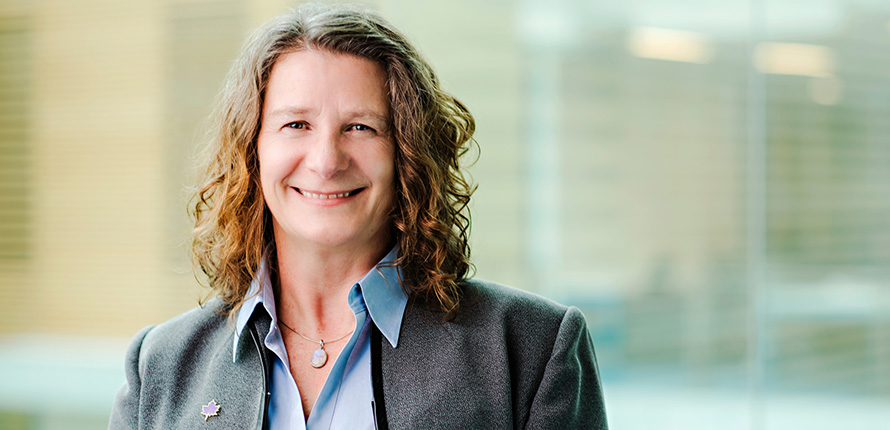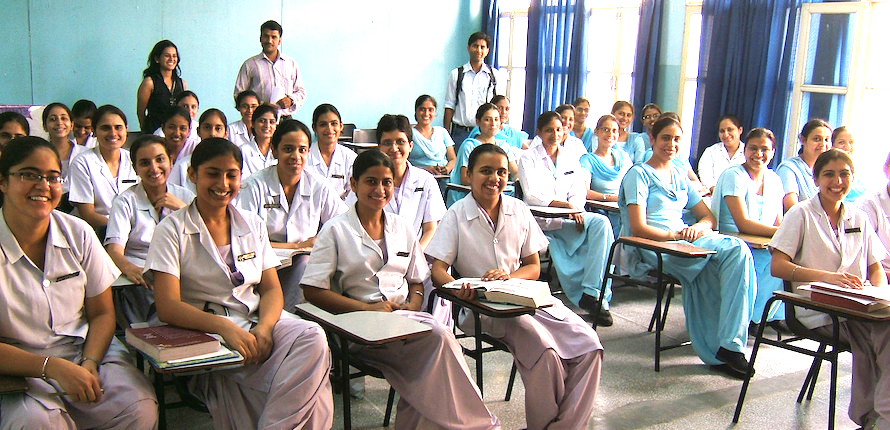We use cookies on this site to enhance your experience.
By selecting “Accept” and continuing to use this website, you consent to the use of cookies.
Search for academic programs, residence, tours and events and more.
Feb. 23, 2023
Print | PDFIn recent months, news headlines have been dominated by concerns of labour shortages in Canadian health-care systems. For insight and analysis, we spoke to Margaret Walton-Roberts, a professor of Geography and Environmental Studies at Wilfrid Laurier University.
Walton-Roberts’ research focuses on the global migration of nurses. She is currently leading the Global Nurse Migration Pathways project, funded by the Social Sciences and Humanities Council of Canada, which is comparing three distinct migration models to establish international best practices. Her latest book is titled Global Migration, Gender and Health Professional Credentials: Transnational Value Transfers and Losses.
We don't really know how many health-care workers we have across the country. We have 13 completely different health-care systems, and we don’t have very effective health workforce data to understand trends like inflows and outflows. This raises many questions. Are we training enough medical professionals? Are we making the job attractive enough to retain the ones we have trained? When we bring professionals into our country, are they being effectively integrated into the health-care system?
We are in a pandemic and health-care workers are burnt out, and they are leaving because they’re unhappy with how things have been going. It’s a very challenging job and it's not made any easier when it's constantly in the crosshairs of austerity. The quick fix has been, “We'll just import some more health-care workers, or we'll just work short-handed,” and I think we've pushed it too far.
Gender is a big deal because more than 75 per cent of health-care workers around the world are women, and yet they tend not to hold the senior leadership positions in the occupation. Caring professions are generally undervalued because they are heavily feminized. We always think of them as a cost, not an investment.
The main barrier is having their credentials recognized. The majority of health-care professions in Canada are regulated, meaning that there is usually some kind of body that controls licensing and recognition. Since the 1980s, the federal government has been providing funds to professional regulators to encourage them to streamline their systems. And now in Ontario, we have provincial fairness commissioners, or ombudsmen, who are overseeing the process of recognition for foreign-trained professionals, asking for it to be fair, transparent and objective, and that the fees charged are only enough to recover costs.

The provincial government is working with regulatory agencies to figure out what can we do to address this backlog. Ontario has introduced a supervised practice experience partnership model where you can hire a nurse whose credentials haven’t been fully approved yet and they can start working under the supervision of the employer. At the end of their work period, the employer can say, “Yes, they meet the safe practice and communication requirements.” And that’s it. Then the nurse is granted their license and can be hired. That has been a successful strategy so far.
Historically, the preeminent concern for regulatory agencies has been public safety. They need to protect the public by making sure the person who has the credential can do what they are supposed to do. But now they are recognizing that they also play a role in labour market entry, and they have a responsibility to make their processes as efficient as they can.
Canada has an active immigration policy and people come here under all kinds of different migration categories. Every year, thousands of those immigrants will have health-care training from their home country, and I believe we have an ethical obligation to utilize their skills to the best ability that we can. If we are taking them from countries that possibly have a health-care worker shortage of their own, we can't just let those skills go to waste. They may not necessarily go into exactly what their previous occupation was, but we need to identify opportunities for them to enter a relevant alternative career. And we need to create career laddering opportunities.
Canada signed the World Health Organization's Global Code of Practice on the International Recruitment of Health Personnel, and the spirit of that code is that we need to protect the ability of all countries to meet the needs of a universal health coverage approach. We need to have better bilateral agreements that manage the global migration of health workers and provide partner countries with some benefit from these movements so that these countries do not send workers to Canada at the expense of their own health-care systems.
Student Collaborators
Laurier students play a critical role in conducting and communicating Walton-Roberts’ research. A digital storymap developed by Sierra Beacher (BSc ’19, MES ’22) and Harshul Mehta (BSc ’22) about global nurse migration was a top 10 finalist in the 2020 ArcGIS StoryMaps Competition for the Sustainable Development Goals. “Dr. Walton-Roberts was an outstanding mentor,” says Mehta. “We attended workshops that taught us how to use digital storytelling technology to communicate our research with a wider audience, and she connected us with Ravin Murugan, whose story we used to highlight the journey of an internationally educated nurse coming to Canada.” “I hope that people will learn the importance of the global agreements that promote fair migration and the ethical recruitment of health-care workers,” says Beacher. “The COVID-19 pandemic has shed light on how critical having the right number and mix of health-care workers is to securing global population health.” True to the international scope of her research, Walton-Roberts has also engaged students from around the world in her work. Through the Mitacs Globalink program, which provides funding for international research internships, she has collaborated with students from Vietnam, Ukraine, India and China.
"If we are taking them from countries that possibly have a health-care worker shortage of their own, we can't just let those skills go to waste."
I think it will always be one of the tools in the toolkit. There is always room to integrate internationally educated professionals, and we must do a better job of that. But it can’t be at the expense of investing in the domestic production of health-care professionals and making the job more attractive to those workers so they want to stay in their profession.
The “triple win” model is supposed to provide benefits to the source and destination countries, as well as the migrant. The example we’ve been studying is a training agreement between Germany and Vietnam. Germany provides language training to Vietnamese migrants before they arrive, then they come and train with German nurses.
In the case of the Philippines to Singapore, we call that the “bus stop” model. That's a term used by an immigration consultant because nurses tend not to be able to stay in Singapore permanently. They go and work there, but it's like they're at a bus stop waiting for the next bus to another country that offers better conditions, including the option to apply for permanent residency or citizenship.
And then we call the India to Canada pathway the “two step.” Indian-trained nurses come to Canada as students, then convert to postgraduate work visas to work in the sector and potentially apply for permanent residency.
We have been contrasting these different pathways to get a handle on which one seems to work most effectively for migrants, as well as source and destination countries.

We are only partway through the project, but what’s been interesting is that the landscape has completely changed since we began this research because of the COVID-19 pandemic. For example, I think the process for Indian nurses coming to Canada, which initially felt a bit ad hoc to me, has become more formalized throughout the pandemic. Regulatory authorities like the College of Nurses of Ontario seem to have recognized that this is how nurses are coming into the system and made the process for internationally educated nurses more efficient. I think that’s an improvement.
The triple win model, which was explicitly designed to be the fairest type of migration, hasn’t scaled up in the Vietnam-Germany case. We’re doing contextual analysis to figure out what’s happening.
And then the Philippines to Singapore situation is an interesting example because Singapore is the wealthiest country in the Asian region and has all these neighboring countries to call upon, and they have been slightly improving conditions for temporary foreign workers. We believe this could because of the pandemic. Countries that hire immigrant health professionals are realizing that they need to do a better job attracting and retaining them, because now there is greater global competition for health workers.